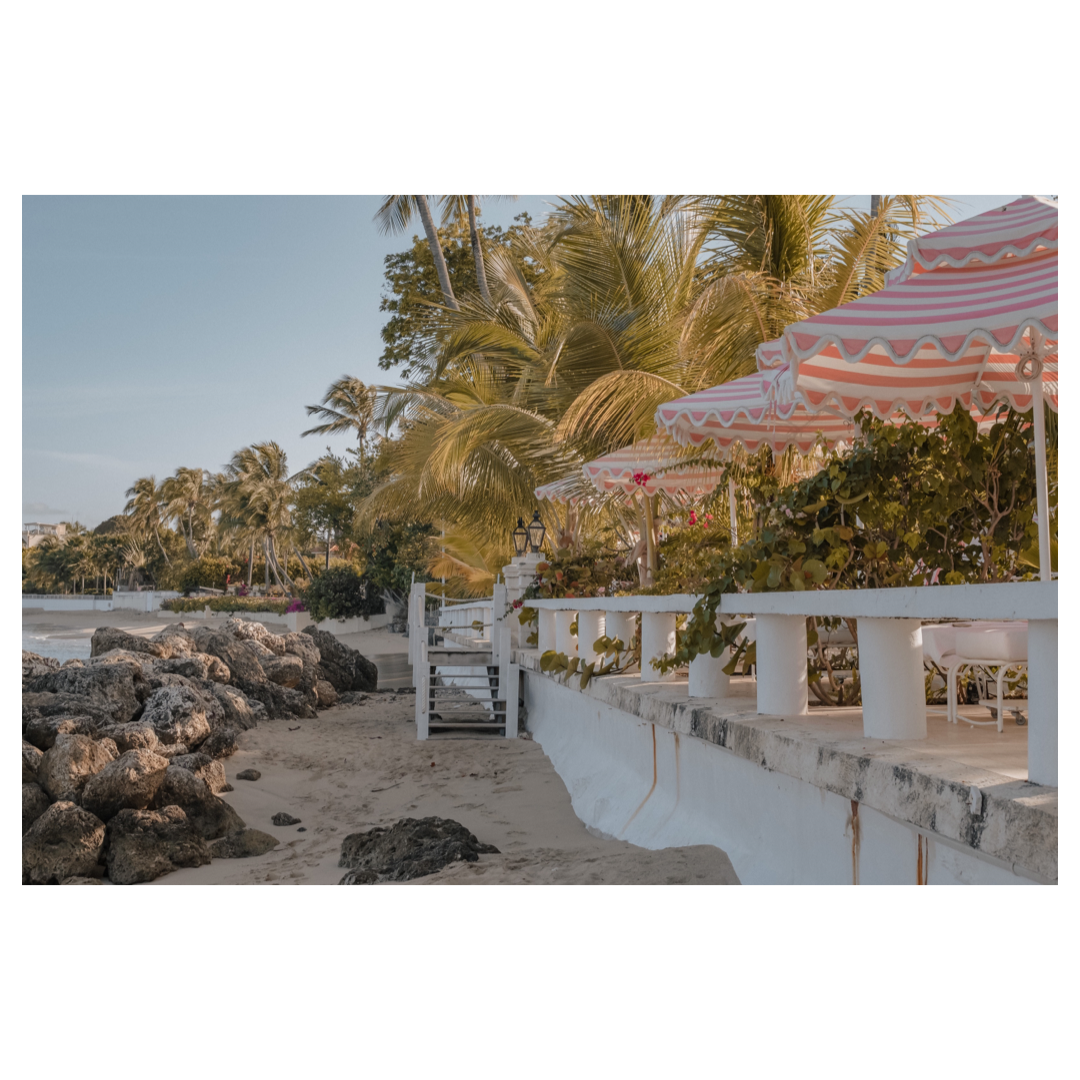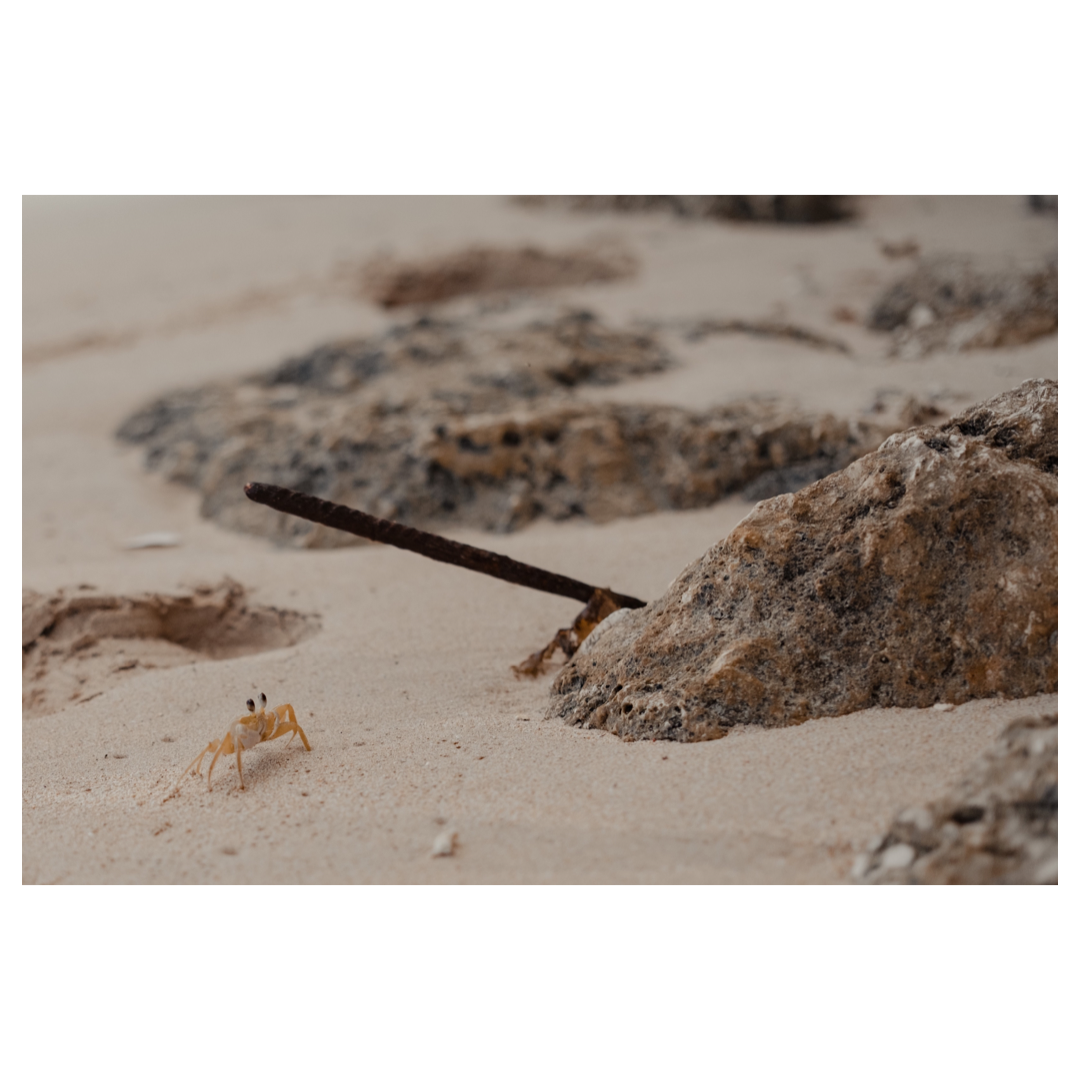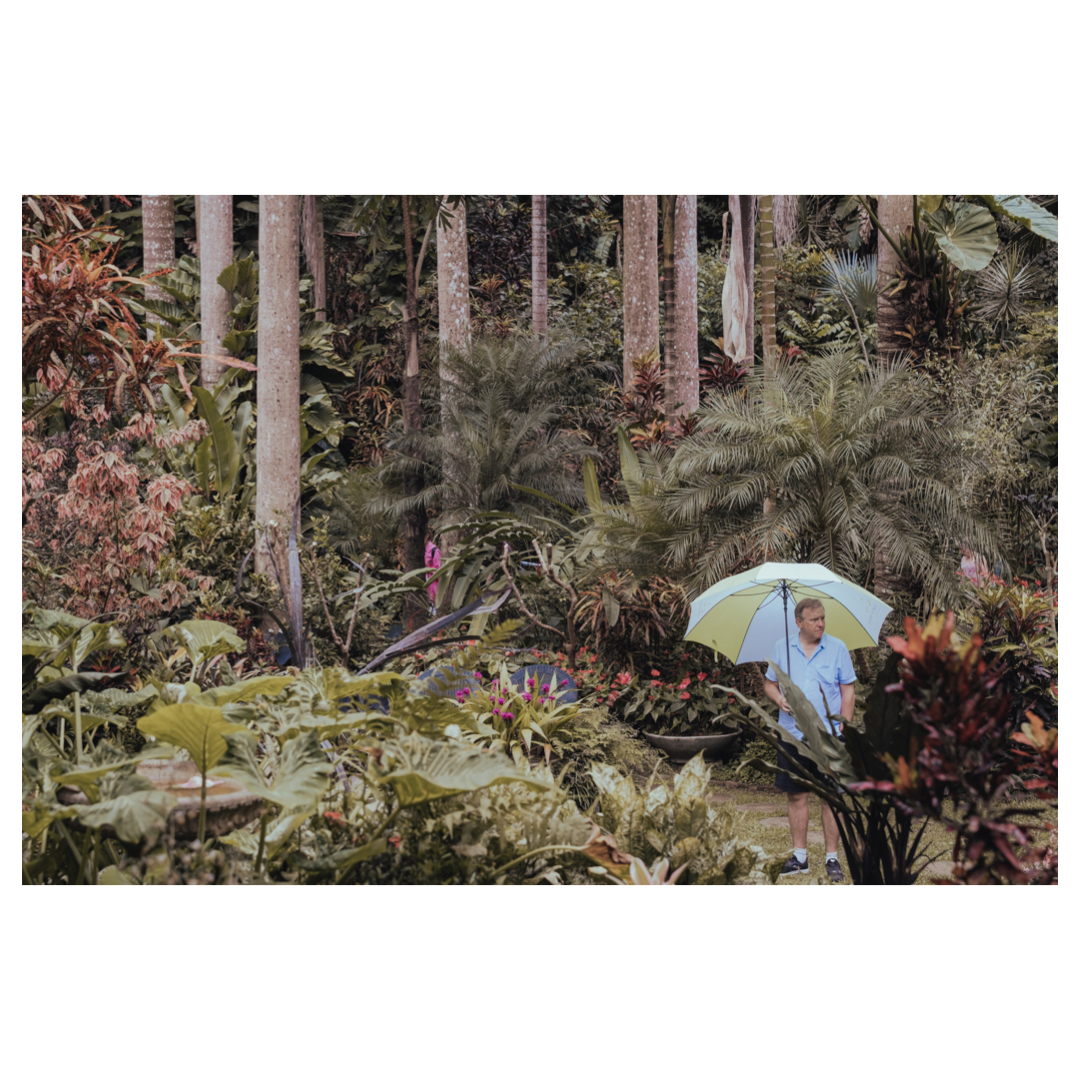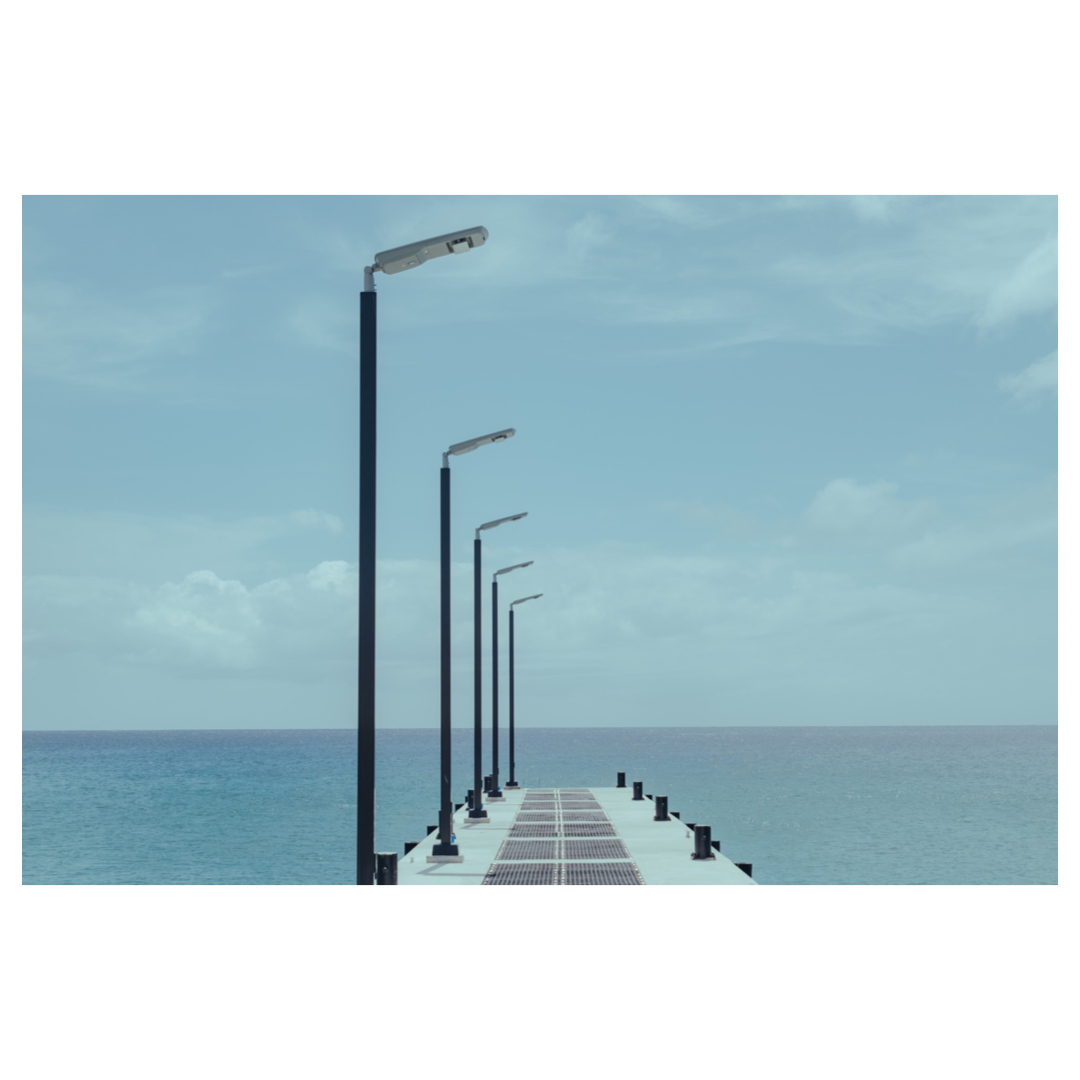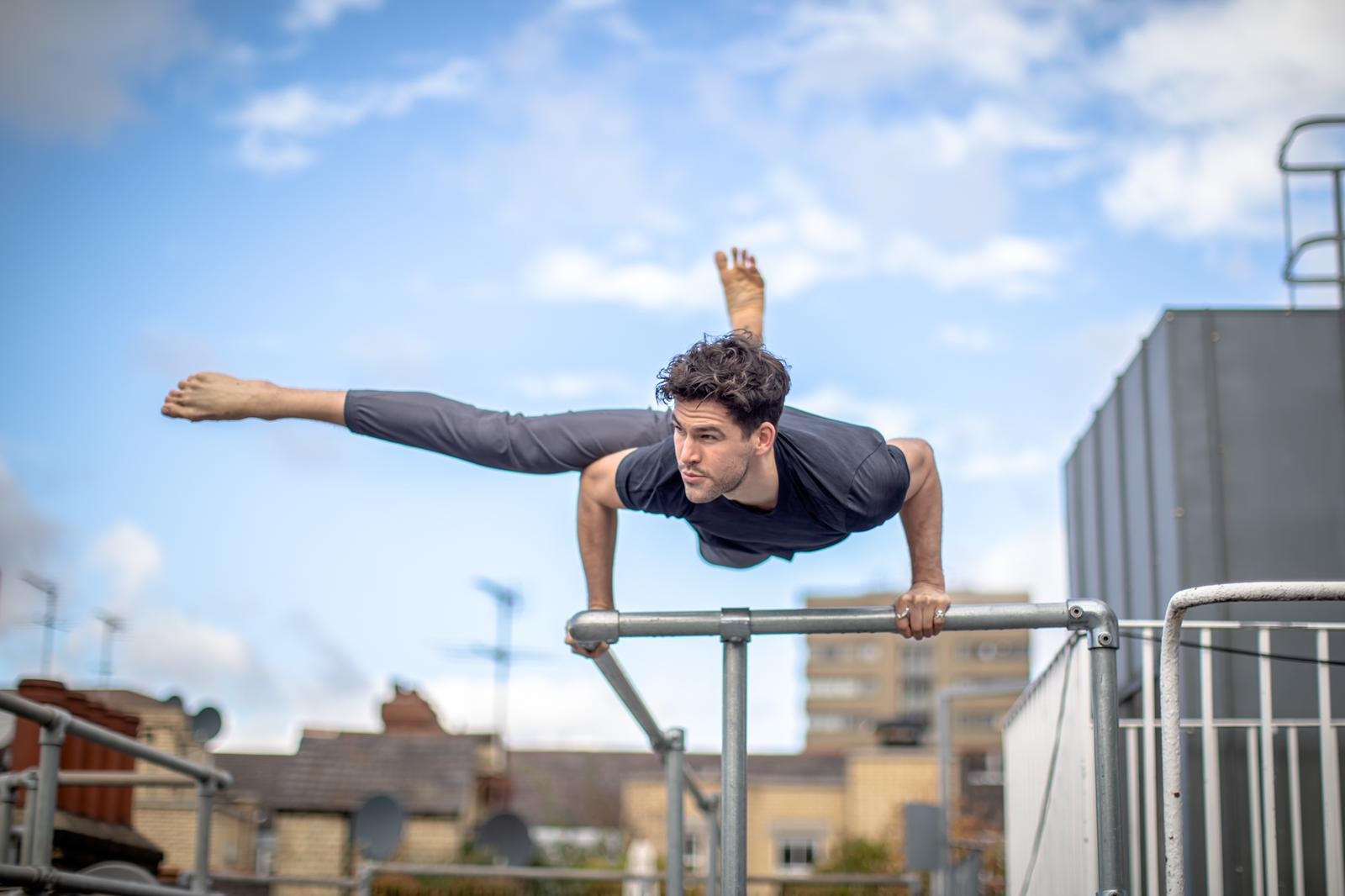
Elevate your lighting game
Whether you’re a yoga teacher, nutritionist or an instructor for sword juggling, in the post-covid age, taking our teaching into the digital realm has become more viable than ever before. Problem now, is that it’s so easy to get online, you’ll need to up your game to stand out from the competition. How? The visual and audio quality of our content
Don’t worry; you don’t need to spend thousands on cameras and become an amateur cinematographer. Good lighting can transform a modest living room into an inviting space where every movement and breath is showcased in crisp, flattering detail. Poor lighting? Well, that can leave you looking more like a silhouette in a dimly lit cave. Lighting is 80 % of the journey everything when it comes to creating A-grade video form your home.
Understanding Key, Fill, and Backlight: The Holy Trinity of Lighting
Whether you're filming in a professional studio or a spare bedroom, mastering the fundamentals of lighting boils down to balancing three types of lights: key light, fill light, and backlight. Think of these as the three pillars of a well-lit scene. I’ll admit that im going to be a little yoga-biased in the below, but similar guidelines will work for most creators out there.
1. Key Light: The Star of the Show
This is your primary light source, responsible for illuminating you—the educator. It’s the most important light in your setup.
For yoga, you’ll want soft, diffused lighting that mimics daylight. Avoid harsh direct lighting, which can create deep shadows that obscure your movements. You can achieve this by using softbox lights (i.e. a light that you then attach a soft box to) or ring lights. Both diffuse light beautifully and provide a soft, even glow over your entire frame. If you're filming during the day, use the key light in conjunction with natural sunlight—position yourself facing a window, allowing daylight to be your soft, natural key light.
Positioning: Place the key light at least a few feet away from you at a 45-degree angle, slightly above head height, angled downwards. If you're using natural light from a window, ensure it's in front of you or slightly off to one side, never behind.
2. Fill Light: Softening the Shadows
While the key light is doing the heavy lifting, the fill light is there to balance things out. Its job is to reduce the shadows created by your key light, ensuring an even, soft appearance.
If you're using soft natural daylight as your key light, you may not even need a fill light. But if you're in a room without great daylight, or if you're filming at night, you’ll want to place a fill light on the opposite side of the key light, at a similar height, but at a lower intensity. This can be another softbox, or even an LED panel with adjustable brightness.
The goal is for the fill light to "fill" in any shadows cast on your face or body, but not to compete with the key light. It should be subtle, just enough to create even lighting across your frame without washing you out.
Positioning: Place your fill light on the opposite side of the key light, ideally at the same height, about 3-4 feet away. It should be less intense than the key light, so dim it or move it further away to create balance.
3. Rimlight : Creating Depth
A rim light serves to separate you from the background, adding depth to your video. Without it, your background and body can blend together, making the video look flat. The backlight subtly highlights the edges of your silhouette, creating depth and a more professional look.
Positioning: This light should be placed behind you and slightly above, angled toward your upper back and head. It doesn’t need to be bright—just enough to outline you. A small LED light or even a well-placed lamp can work.
4. Bonus : Decorative lights
Beyond the functional lights that illuminate you, there’s room for creativity in how you light your space. Feature lights, like accent lamps, uplights, candles, smart bulbs or string lights, can add warmth and character to your background. These lights aren't meant to illuminate you directly but rather to enhance the overall ambiance, making the space feel inviting and aligned with the calming energy of yoga.
They can add a soft glow that breaks up the monotony of a plain wall. Avoid anything too bright or distracting—these lights should subtly enhance the aesthetic without stealing the show.
Positioning: Scatter them strategically around the background, placing them on bookshelves, window sills, or tucked behind plants. Ensure they're not so bright that they compete with your main lights, but just enough to add a cozy, peaceful vibe.
Balancing Natural Light and Artificial Light
In a home setup, you’ll likely be working with some natural light, especially if you film in a space with big windows. The best time to film is during the golden hours—early morning or late afternoon—when the sunlight is soft and diffused.
However, natural light can be inconsistent. Clouds move, the sun sets—lighting changes can be distracting. This is why incorporating artificial lighting is key. A few well-placed LED or softbox lights ensure consistency no matter the time of day. If you're relying on natural light, supplement it with soft artificial light sources that you can control.
If you want absolute control and want to paint a blank canvas with your light, then black out the space; install blinds, stick up bin liners …. whatever you have access to .
Extra goodies
Avoid Overhead Lighting: Overhead lights create unflattering shadows on your face and body. Stick to side lighting.
Always diffuse the Light: Use softbox diffusers or bounce light off walls to soften the lighting. Harsh light can be distracting and unflattering.
Keep it Balanced: Make sure there’s no one part of the frame that’s drastically brighter or darker than another.
Mind the Background: Ensure your background isn’t overexposed. Keep lighting on you, while the background remains slightly less bright for contrast. If you’ve got buckets of space, then give yourself as music distance from the back wall as possible
Experiment and Adjust: Lighting takes practice. Try different setups, take test shots, and see how the light interacts with your space.
Final Thoughts
Getting the right lighting for your yoga classes is an investment in your online presence and professionalism. Whether you’re filming in a compact studio or the corner of your living room, thoughtful lighting can transform the experience for your viewers. Balanced, diffused light that highlights your movements clearly, while maintaining a serene, inviting atmosphere, will help keep students coming back to your classes.
For some of the products I use, click here for my Digital Creator storefront on amazon here; it is an affiliate link
Get 1-1 yoga teaching and business support on my LEVEL UP online programme, starting late October
Appreciating what you have, before fantasising about what you don’t
Appreciating what you have, before fantasising about what you don’t
In those quiet moments— behind the wheel, grabbing a solo bite to eat or even just sitting on the toilet—you might be surprised by how valuable you’ll find it to cultivate this simple, yet powerful habit. Instead of letting your mind meander aimlessly, ruminate or worry about future events it has zero control over, press pause on those narratives and start try to consciously rewind your mind to the good times.
Reflect on all those things in your life, you’ve long since taken the time to appreciate; your partner, your children, your friends, your home, your health. Let your mind travel back to back to the kindnesses you’ve observed throughout the day and the small victories that might otherwise be forgotten; the item ticked off your to-do list, the taste of the morning croissant, the smile you got from a coworker, the cool thing you saw a stranger do.
By taking stock of the reasons you have to be grateful, you’ll subtly shift your everyday mindset. You’ll remind yourself of the richness that already surrounds you, and in doing so, you’ll reinforce the reasons why life is a ride to be cherished. Beginning to appreciate what you have, is far more useful for your mental well-being (and cheaper) than fantasising about what you don't have. As Naval says, if you cant appreciate a good coffee, you won’t be able to appreciate a yacht.
All this is more than just feel-good fluff. It’s simple, yes, but over time, it can flip the script on your entire outlook on life. Trust me, it’s a game-changer.
FOLLOWING YOUR OWN PATH, IMPERFECTLY
FOLLOWING YOUR OWN PATH, IMPERFECTLY
“It is better to follow your own path, however imperfectly, than to follow someone else’s perfectly.” it says in the Bhagavad-Gita. The weight of this advice significant, especially in a world that often nudges us toward the well trodden footsteps of others. Yet, if we look closely at those who have left their mark, it’s clear that the road they walked was anything but uniform. Their routes diverge wildly, but their methods share something in common—an unwavering faith in the self.
At the core of any developmental endeavour lies a simple but profound truth: trust. Not in the external markers of success society expects yo to have in your goal posts, nor in the neatly packaged formulas of others, but in one’s own internal compass.
This trust isn’t easy—it demands a journey inward, a meeting with the unpolished, hidden parts of ourselves. But it is here, amidst the uncertainty, that real gold begins to emerge.
To find the practice that aligns with your unique rhythm, is to unlock a process that feels almost alchemical. In a time when the world seems to cry out for fresh perspectives and new ideas, your profoundly honest self is precisely what’s needed.
Time to become less distracted
Time to become less distracted
In our hyper-connect world, there is more stimulation than ever before; sometimes that stimulation actively pokes us (i.e. phone notifications) and sometimes the mere knowing the distraction is an option, is enough to take us way from the meaningful stuff (i.e. scrolling amazon, mid task, for that desk organiser you know it will distractedly change your productivity.)
If you want to limit the effects of these external forces, pulling you way from the stuff that aligns with your deeper values, then here’s 5 tips
Batch email - Set aside time each day when you are intentionally focusing on tackling your inbox; stop responding to emails mid task or on the go. That ‘quick’ email response on your phone whilst commuting, probably took you 10 times longer and was written more poorly, than it would have been sitting a desk. 10 times longer, across 100 emails the average office worker gets per day, will sure build up! If you’re on the go, dive deep in to a single task like reading or listening a podcast. If you’re at a desk, in a non-email slot, then set your email software to ‘don’t disturb’
“ We need to claim back the notion that what is urgent for someone else, doesn’t need to be what is urgent for you”
Refuse meetings -A diary full or meetings can give you, and potentially your manager, the sense that you’re a productive person, but oftentimes what can be achieved in a 30 meeting, can probably be dealt with in 5 minute call or a 1 minute email. If you do take meetings however, make sure; there is an agenda, only necessary people are there, at least some brainstorming happens before and replace devices, with pens & paper to remove in meeting distraction
Delete some apps - As much as I’d love a ‘dumb phone’ I want access to maps, my ring cameras, parking apps… and of course, social media is a big part of my work. So, under the assumption we’re going to keep our phones, lets a least make it less distracting. First step is an easy one; delete the apps you don’t use. Step two is to categorise the apps in to 3 categories across 3 screens, deleting what doesn’t fit; 1) Life Tools e.g. calculator or maps 2) Aspiration - things you’d like to do more of e.g. kindle app, yoga app, or podcast app 3) Work/ Admin - things you absolutely have to have access to on your portable device e.g. emails, social media, pdf viewer. Final step is to turn off as many notifications as possible.
Leave-me-alone mode - if you’re around other people, there will be points in the day where they want something from you; your partner wants to know where they left their keys, you child wants to have a snack, your co-worker wants to access a file. We need to claim back the notion that what is urgent for someone else, doesn’t need to be what is urgent for you. When you want to go deep in a task, find a way of telling people. Direct tactics might be; saying a shut door / a mini sign / a particular hat(!) means don’t disturb unless critically urgent. You could also try just wearing oversized headphones, even if you’re not listening to anything, and hope people get the passive message.
Have intention for each block -If you’re not 100% committed to an activity in a 30min slot of your day, you’ll have nothing to hold on to when a distracting force tries to pull you under the surface. What follows might seem like overkill, but its time to reclaim you focus. Each Sunday night, plan you week and have intention for each slot. Colour code it to 3 categories, in order of priority; stuff for you, stuff for friends/family and then work. If you decide to allocate a period to scrolling YouTube, that fine; knowing it’s there should help you avoid it at other times. I’ve even played with adding tasks for commutes; I have ‘invoicing commutes’, ‘not-fiction commutes’ and ‘social media commutes’!
Let me know how you get on with seizing back your time. I’d always love to hear from you and will respond to every comment . For more of my writing do subscribe to my newsletter.
Why you need to convert to barefoot shoes!
I can’t lie; when I first saw barefoot shoes many years ago I wasn’t an immediate covert; mainly due to me thinking they weren’t hipster-cool enough for me! I’m a person that can be persuaded by data and scientific evidence however, and after breaking my foot and rupturing a ligament 6+ years ago, foot health and mobility suddenly became a topic to geek out on. Nowadays 30% off my time i’m wearing Vivobarefoot*, 65% I’m shoe-less and 5% of my time I’m trying to be cool in some face boots or reebok classics!
*(code ADAMHUSLER20 will get you 20% off all Vivobarefoot for December only)
In short, barefoot shoes are designed to mimic the natural shape and movement of the foot, allowing for a more natural and unrestricted gait. Here are five major benefits of wearing barefoot-style shoes, but there’s plenty more!
Improved Foot Strength and Functionality:
Natural Movement: they encourage a more natural walking and running gait by allowing the foot to move in a way that closely resembles walking barefoot. This helps in strengthening the muscles in the feet and lower legs that may not be activated as effectively when wearing traditional shoes with thick soles and arch support; think Crocs and Nike Low-Dunks!
Enhanced Stability: The minimalistic design of barefoot shoes promotes better proprioception—the body's ability to sense its position in space. Something most of us in the modern world are getting worse at! This heightened awareness of body movement and ground contact enhances overall stability and balance. It engages the intrinsic muscles of the feet, which play a crucial role in maintaining stability. Remember, a big killer when you get older (beyond the big diseases) is, sadly, falling over!
Encourages Proper Biomechanics:
Maintains Natural Arch: Traditional shoes often come with elevated heels and arch support, which can alter the natural alignment of the foot. Beyond an added layer of grip on hiking shoes, most barefoot style shoes typically have a flat sole, allowing the foot to maintain its natural arch. This can contribute to better biomechanics and reduce the risk of conditions like overpronation or supination.
Promotes Toe Spread: Many barefoot-style shoes have a wide toe box that allows the toes to splay naturally'; essential for weight distribution and balance. As a yogi, I used to wear toes spacers to bed at night, after a normal working day wearing ‘traditional shoes’ with narrow toe boxes. These tight shoes can can lead to issues such as bunions, but wearing barefoot shoes helps prevent these problems by allowing the toes to move freely.
Enhanced Sensory Feedback:
Increased Sensation: Barefoot-style shoes provide a closer connection to the ground, allowing the feet to receive more sensory feedback. This increased sensation helps the brain better understand the terrain and adjust the body's movements accordingly. It enhances the foot's ability to adapt to different surfaces, promoting a more agile and responsive walking or running experience. I actually love feeling the world with my feet; in barefoot shoes you can feel every stone on a hike… but not in a unpleasant way!
Prevention of Foot Problems:
Mitigation of Common Foot Ailments: Wearing traditional shoes, especially those with narrow toe boxes and rigid soles, can contribute to common foot ailments such as plantar fasciitis and Achilles tendonitis. Barefoot-style shoes, by promoting natural movement and foot flexibility, can help mitigate these issues and even contribute to the recovery process for some individuals.
Encourages a More Natural Posture:
Alignment Benefits: The design of barefoot shoes, with a flat sole and minimal arch support, encourages a more natural posture. This can contribute to a more optimal spinal alignment and reduce the likelihood of postural issues that may arise from wearing shoes with elevated heels or excessive arch support.
So maybe i’ve persuaded you to give barefoot shoes a go. Our little boy has 3 pairs, i’ve finally persuaded Holly to get a pair in the form of snow boots, and my daily pair are these ones. It's important to note that transitioning to barefoot-style shoes should be done gradually to allow the feet to adapt; don’t start barefoot ornate day for your first half marathon!
Affiliate code ADAMHUSLER20 will get you 20% off all Vivobarefoot for December only - then it reverts back to 10% with ADAMHUSLERVB.
We actually had the founder of Vivobarefoot on our podcast at the very beginning; before we really knew what we were doing. The conversation really picks up half way though.
I don't like it... but I cold plunge daily.
Cold plunging has been part of my life for a good while now, and I’ve just upped my game by with the addition of a Rewyld oak plunge in our cottage garden. No more stuffing the freezer with bottles of water; my plunge water stays clean and cold all day, every day! So why do I bother jumping in cold water? Sounds like hell frozen over? Here’s some of the benefits..
1. Muscle Recovery & Dopamine Hits: Exposure to cold water induces vasoconstriction, reducing blood flow to skeletal muscles. This constriction does wonders at reducing post-exercise muscle inflammation and damage, helping you recover faster. If you’re doing strength training though, don’t get cold within the following few hours as you want that inflammation for muscle growth! Additionally, cold water exposure can fire up the bodies intrinsic antioxidant defence systems, which in turn may encourage the release of dopamine, a neurotransmitter associated with motivation and reward.
2. Endorphin Release: Cold immersion activates the sympathetic nervous system, leading to the release of endorphins, which are natural opioids. Expect a mood boost, some stress alleviation, alleviate stress, and general all well sense of feeling good for a few ours after.
“I find the most time effective way to built grit, resilience, determination and discpline, was to jump in to a cold plunge each day”
3. Immune Modulation: Prolonged cold exposure may stimulate the production of leukocytes and enhance their functional activity, potentially strengthening the immune system's ability to ward off infections. My preference is to get in the plunge when I feel the first sign of illness, rather than in the midst of it!.
4. Skin Health: Though I look like a salmon straight after a plunge, the cold-induced vasoconstriction and subsequent vasodilation can invigorate the skin, potentially improving microcirculation, oxygenation, and nutrient delivery, which can make your skin glow!
5. Building Grit: Through my life, I’ve grown most via doing hard things… whether forced upon me or by choice, e.g. ultra marathons. As a time poor, self-employed, new dad, I find the most time effective way to built grit, resilience, determination and discpline, was to jump in to a cold plunge each day. Every day I procrastinate and delay this experience… but I never regret it.
If you have the space and resource to add a stunning ice plunge to your life, then Rewyld is happy to offer all of my followers 5% off….just mention my name. If you're new to it, you can start with cold showers or simply fill a normal bath will cold water; it may be cold enough to get the benefits, especially in the winter.
A Whistle-stop Tour of the Bhagavad Gita
You’ll certainly have been told to read this as part of any yoga teacher training, or perhaps you’ve just heard a teacher quote from it during a yoga class. Today, let me give you a little breakdown of this 700-verse Hindu scripture; part of the Indian epic, the Mahabharata. The focus is a dialogue between Prince Arjuna and Lord Krishna, who serves as his charioteer and spiritual guide.
Arjuna faces a moral and philosophical crisis battlefield; he’s a skilled warrior ready to fight a great war, but he's suddenly paralysed by doubt and moral conflict, incurred by having to make a difficult choice
You’ll certainly have been told to read this as part of any yoga teacher training, or perhaps you’ve just heard a teacher quote from it during a yoga class. Today, let me give you a little breakdown of this 700-verse Hindu scripture; part of the Indian epic, the Mahabharata. The focus is a dialogue between Prince Arjuna and Lord Krishna, who serves as his charioteer and spiritual guide.
“a skilled warrior ready to fight a great war, but he’s suddenly paralysed by doubt and moral conflict”
Arjuna faces a moral and philosophical crisis battlefield; he’s a skilled warrior ready to fight a great war, but he's suddenly paralysed by doubt and moral conflict, incurred by having to make a difficult choice… the type that most of us will face in our lives. Perhaps Arjuna’s choice might be a little harder the ones we may encounter though; as in the opposite army are Arjuna’s own relatives, teachers and friends.
Throughout the text, Lord Krishna imparts wisdom on various aspects of life, dharma (duty), and spirituality, ultimately guiding Arjuna to overcome his inner turmoil. Krishna reveals that one's true self is eternal and transcends the physical body. He teaches about the paths of devotion (bhakti), knowledge (jnana), and disciplined action (karma), emphasizing the importance of selfless service and surrender to a higher power.
We can apply many of the teachings to various aspects of a yoga practice
Jnana Yoga: This path of knowledge encourages us to contemplate the nature of the self, understand the impermanence of the physical body, and recognise the eternal nature of the soul (Atman).
Karma Yoga: The Gita emphasises selfless action and doing one's duty without attachment to the results. Through a Karma Yoga practice individuals perform their actions without desire for personal gain.; we can extended this to an asana practice where we practice poses without attachment to the outcomes.
Bhakti Yoga: Bhakti Yoga is the path of devotion, and the Gita underscores the importance of devotion to a higher power, in this case Lord Krishna, but we can interpret this as a connect to universal higher power.
Meditation and Mindfulness: Throughout the Bhagavad Gita, there's a strong emphasis on the importance of meditation and mindfulness. The mind is compared to a restless monkey, but through practice, it can be stilled and focused.
Find my favourite version here * along with my other yoga book recommendations.*
*some links are affiliate links and the author may receive commission on purchases made
Barbados Workshop Teaching 2022
A photographic tour of my first time teaching in the Caribbean…
A photographic tour of my first time teaching in the Caribbean…
Building a Balanced Relationship... with your Phone
Building a Balanced Relationship... with your Phone
At a time where distractions are endless, the most urgent thing for most of us to do, is to somehow break free and actually arrive in the moment. Imagine actually being present at a dinner table without being compelled to check how many likes you got on that Instagram post. Imagine hours of deep productive work rather that hopping from inbox, to social media to online rescue cat browsing. Imagine looking at the people around you, whilst navigating rush hour streets, rather that watching a TV series on your phone and hoping the other commuters will clear a path for you!
As a self-employed person in the wellness industry, with no permanent base, mobile-tech is absolutely key to my career, but I’ve been working on building a healthier relationship with my devices. Here are a few strategies I’m playing with. All take work and perhaps a lot of brain re-wiring.
Tip One - Notifications Off!
There has never been a single pop-up notification I’ve ever received that has been urgent. Not one. And they don’t just notify us do they; they tempt us to press and explore a little bit deeper until the rabbit hole swallows us up. If we let these apps pull us in their direction, every few minutes there will be fewer and fewer moments of effective working and effective peace in your life, guaranteed.
The Practice - Turn off all notifications on all devices, except ones that may legitimately be used for emergencies e.g. phone calls. If you can’t let go of WhatsApp beeps quite that easily, perhaps at least mute most of the conversations except your closest friends/family and break free from those group chats! Where possible, press that big do-not disturb button - remember you can often allow calls from certain numbers to come through after a specified amount of attempts.
Tip Two- Work out intention and don’t deviate
Standing in queue? Get phone out. Walking busy streets? Get phone out. Sitting on the tube? Get phone out. Just made love? Get phone out…. Really? I think we might need to retrain our autopilot so that we stop automatically filling every empty moment with a screen. Let's enjoy the company of our our minds and not fear the slightest whiff of boredom.
The Practice - before you get out that device, take a split second to decide what you actually want to use it for. If there isn’t a need, leave in in your pocket. If there is a need, do that thing, then put device away. Simple as that.
Tip Three - Sacred spaces where tech is no-go
Given our globally, ever connected world, your phone could fill you with a blur of distraction and incessant work emails 24/7. Where do nurturing relationships, self-development or good literature fit around that? We need time away from our devices, but having them in our pockets and simply not using them can require quite a lot from our willpower. The most obvious way to remove the distraction of a phone when you want space, is to be as far as you can away from it; meaning far less willpower needs to be invoked!
The Practice - Decide the times or places when you want space from your device. Times where you know the device would offer nothing, but take away a great deal. My sacred spaces are my yoga mat and our bedroom (I bought an alarm clock!)
Tip Four - Distracting apps out of sight
Some apps are purely functional and no matter how much you want them to, they don’t bring the fun times and offer little by way of procrastination. I’m thinking; Google Maps, Uber, banking apps, stopwatch, calendars etc. These are the apps that go on the first page of my phone screen! The more distracting the app is the deeper it goes in to the belly of the phones and the more clicks I need to make to get to it, hoping somewhere along the way, I stop clicking.
The Practice - Put all of the boring, but useful, apps on the first screen of the phone. Put work apps on the second screen. Put the entertaining apps on the the third screen, in folders. Put the time-killer apps on the fourth screen, in a folder with a name like ‘Really…?” or “U sure…?” If you can bear it, maybe delete the app entirely and only use the associated service on a laptop/desktop browser. That’s one for the brave!
Tip Five - End of day closure
Our devices often keep our lives ticking over and we’re increasingly reliant on them. Along with emails and social. media, I’ll often have a list of task I need to to on my devices by the end of the day: ordering the brother-in-law a birthday card, making a last minute restaurant reservation for that anniversary or checking in for a flight. At some point, we need to be able to switch off, so once you realise you’ve done all you need, close off your online day and find some digital peace till the next morning
The Practice - At some point in the afternoon, make or remake a list of things you’d want to get done on your device, by the end of the day. Do those things as soon as possible and once the last one is done, put that device away unless there is an absolute, in the moment need, like ordering a Uber.
Tip Six - Screen and app time limits
When will power isn’t enough, your device can, with slight condescension, give you a hand. Speaking as an Apple user, their devices have a wonderful function (under ‘Screentime’) where you can set limits on usage time for individual apps and if you try to use it past that time, you have a choice of; not using it, going for 1 more min, 15 more min, or admit you have zero willpower and using it the rest of day, with guilt. I’m sure other phone operating systems have similar functions.
The Practice - My iPhone now stops me from using any entertaining or work related apps, including browsers from 8pm to 8am. I’ve also added a separate time cap on my use of social media apps. If there is something I absolutely need, in the black out hours, I go though the process of getting my laptop out, which normally involves me deciding I don’t actually ‘need’ that thing after all.
Tip Seven - Limit using you device for entertainment
You’d have thought that our wonderful devices, with all their functionality, would mean that we could get all of our work or life tasks done quickly, leaving us with more time for hobbies, socialising, reading and whatever else tickles your fancy, for entertainment . Turns out that we’ve ended up staying on our devices for watered down versions of all of the things above and that new found free time has somehow disappeared. If we can avoid picking up our device for shallow, quick hits of entertainment, we may be able to seize back our leisure time and use that to make the most of the short lives we have.
The Practice - be as deliberate about your ‘free time’ as you are about your ‘work time’. Recognise that you potentially have a good number of free hours, each day, to play with and then plan what you are going to do with them, as much as you might plan a work week. Start by writing down a list of all those things you’ve been wanting to do/read/see and work out how you can fit it in. With that increased focus on maximising the use of your free time, you might hopefully reach for your phone for entertainment, a little less.
Do I do all of the above? Hell no… but I’m trying; relatively hard, actually. The result is that I’m more present, attentive, calm and walk in to things less while, while navigating London.
“It is said that your life flashes before your eyes just before you die. That is true, it’s called Life.”
If you’ve got more tips or strategies, pop them in the comments below.










